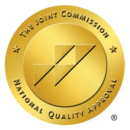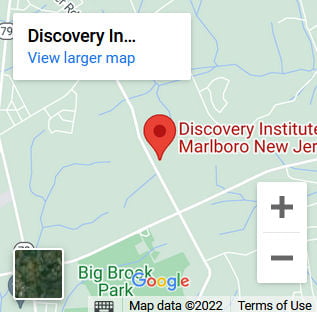Contingency management behavioral therapy is attractive in many ways, but some say that it is too logistically problematic to be a really useful form of treatment. Contingency management therapy (CMT) is a process built around a reward system that can involve both negative and positive consequences for an addict to consider when they make behavioral decisions. The strategy is based around the notion that positive reinforcement is indeed a better way to rewire behavior.
Kathleen M Carroll in her article Behavioral Therapies for Drug Abuse in The American Journal of Psychiatry says the following about contingency management therapy: “Contingency management, in which patients receive incentives or rewards for meeting specific behavioral goals (e.g., verified abstinence), has particularly strong, consistent, and robust empirical support across a range of types of drug use” (https://www.ncbi.nlm.nih.gov/pmc/articles/PMC3633201/). Carroll goes on to say that contingency management therapy is modeled on the principles of behavioral pharmacology and operant conditioning – positive conditioning leading to positive results.
The CMT strategy is successful because its method is to leverage the habit-forming part of the addict’s brain. It is alluring to the reward system in the user’s central nervous system, which is the section of the human brain known to be used and abused by some of the most deadly forms of substance addiction out there. Opioids are drugs that play on the reward receptors in the brain. Turning addiction’s own strategy against itself by aiming all of its focus at the reward center of the brain can result in some impressive end results.
Even though CMT has a good record as far as producing real and positive results, and in many of the cases the success was quite sustainable for those looking to live a life of clean and sober. In spite of this fact, however, many detox and rehab facilities in New Jersey do not make use of CMT due to its substantial cost. Being able to afford the testing for consistent drug checks and funding for the actual rewards themselves, for most treatment centers results in the baseline functioning of the CMT program becoming impossible in the long run. A person seeking out treatment should always be sure to research each specific treatment facility that they plan on attending and the various programs that the facility offers as different facilities offer different therapies.
Top Rated Drug Rehab Centers in NJ Offer Behavioral Therapy
Regardless of if you think contingency management therapy is a kind of therapy that would work for you, behavioral therapy, more broadly, is the cornerstone of most rehab programs. There are many forms of behavioral therapy. Most commonly programs use cognitive behavioral therapy.
What is Contingency Management Therapy: The Details of CMT
There are many types of therapy approaches that can help those who are working to overcome substance abuse. Behavioral therapies work to help individuals develop healthier ways to deal with their cognitive and behavioral behavior.
Sometimes, addiction can be encouraged by the negative thought processes individuals harbor. But, behavioral therapies work to replace those negative and harmful patterns with healthy ones.
Contingency management therapy, sometimes called CMT or motivational incentives, uses a very scientific and psychological process to help condition individuals to develop healthy behavioral patterns.
How Does Contingency Management Therapy Work?
Now that we’ve briefly discussed what contingency management therapy is, it may be helpful to define the actual terms which are used to title this therapy. The word “contingent” is defined as something that depends on or is conditioned by something else. In other words, the event might only happen if other desired actions take place.
In this case, certain rewards can positively affect the individual in recovery as long as he or she performs certain behaviors.“Management” is the way in which therapists work to help arrange and regulate those specific rewards.
So, how do these definitions play into the actual process of CMT? Well, first, it’s important to realize that addiction is a result of positive reinforcement. (Remember, the term “positive” doesn’t necessarily mean that it’s good. Instead, it refers to the way it makes the individual feel.) People who use drugs or alcohol often become dependent on these substances because they produce pleasurable effects.
Of course, although these effects feel good, they don’t lead to good results. In an attempt to continue receiving the rewards, individuals continue to engage in the behaviors that resulted in those rewards; they continue using drugs or alcohol.
This is considered to be an unconditioned reinforcement. Individuals don’t necessarily have to be taught or conditioned to respond in this way when they use alcohol or drugs. This unconditioned positive reinforcer is basically the main reason addiction develops.
So, when it comes to ending addiction, contingency management therapy works too, in a sense, do the opposite of unconditioned positive reinforcement. This type of therapy is based mainly on what we call operant conditioning. In short, this is an approach that rewards positive behaviors.
Positive reinforcement is an element that’s critical to contingency management therapy. But, it is used in combination with contingency management.
The body has a natural reward system, which produces both positive and negative results. In the case of substance use, the body’s reward system makes it difficult for individuals to avoid addiction since drug or alcohol use produces rewards like euphoria and temporary stress-relief.
Fortunately, behavioral therapy approaches understand that the body’s reward system has the ability to encourage individuals to perform healthier behaviors. CMT introducers positive reinforcement in the form of outward rewards, which, in turn, release the natural rewards within the body.
More simply put, individuals who go through CMT are rewarded for performing desired behaviors and gain the opportunity to enjoy the results of their good choices! For example, people who pass drug or urine tests may receive a special reward from the medical professionals in their treatment program, such as prizes or some other sort of acknowledgment.
People who are in recovery may sometimes struggle to avoid using drugs or alcohol. After all, their bodies have grown dependent on the substances they were abusing. It’s never easy to end the dependence and it certainly takes a lot of time and patience.
The ultimate reward after treatment is total freedom from the bondage of substance abuse and addiction. This is one of the most amazing feats a person can accomplish. But, getting to that point can be very difficult for those who are trying to overcome addiction. And, while going through the challenges of recovery, it can be hard to keep that end goal and reward in mind.
It can also be hard to think about the ultimate goal when it feels so far away. So, during the treatment process, it can be helpful to have what you might call “mini goals”, rewarding efforts that lead up to the main reward of sobriety and freedom from drug use. Motivational incentives and positive reinforcements help to give individuals those “mini goals” to accomplish along the way.
There are two main types of contingency management therapy reinforcement and incentive methods:
Voucher-Based Reinforcement – This kind of positive reinforcement, often called VBR, helps to encourage individuals to remain free from drug use. For every urine test that comes back showing no sign of drug use, individuals in treatment get a voucher. These vouchers have monetary value and can be redeemed for various things. Individuals can use them to purchase food items, passes to the movies, clothing, electronic items, and many other services or goods!
As individuals continue to pass drug tests and avoid substance abuse, they receive rewards in the form of vouchers, which they can use to acquire items they want to buy and engage in fun, sober activities!
Prize Incentives – When individuals in treatment avoid substance use and are able to provide breathalizer and urine tests that show up negative for drugs or alcohol, prize incentive reinforcement gives them the opportunity to draw a prize out of a container. Sometimes, prizes may be cash (from $1 to $100+). Or, they may be cards with words of encouragement.
This approach to positive reinforcement has been a source of concern for some. Many have felt that the prize incentive method may encourage gambling because it has an element of chance. But, studies have shown that this isn’t the case.
Getting Treatment and Therapy at Discovery Insititute
If you have been dealing with an addiction problem, it’s not too late to change the course of your life! You may feel hopeless or helpless, but you can overcome substance abuse once and for all. There will be challenges along the road to recovery. But, with the right team by your side, you will gain the freedom you deserve!
You don’t have to let guilt, shame, or fear hold you back anymore. Take a step toward recovery by contacting us here at Discovery Institute today. Just call (844) 478-6563 to learn more about the detox programs, therapies, and treatment approaches we offer here!



